
DX Holidays
Experiance True Sri Lanka
Experiance True Sri Lanka

Sri Dalada Maligawa or the Temple of the Sacred Tooth Relic is a Buddhist temple in the city of Kandy, Sri Lanka. It is located in the royal palace complex of the former Kingdom of Kandy, which houses the relic of the tooth of the Buddha.
Kandy is the last capital of the Sinhala Monarchy. And the City named as a UNESCO World Heritage Site mainly due to the temple.
The Kandy Esala Perahera also known as The Festival of the Tooth is a grand festival celebrated with elegant costumes and is held in July and August in Kandy, Sri Lanka. This historical procession is held annually to pay homage to the Sacred Tooth Relic of Lord Buddha. The procession consists of many traditional local dances such as fire-dances, whip-dances, Kandyan dances and various other cultural dances, in addition to the elephants who are usually adorned with lavish garments.
We’ve added Temple of Tooth visit to below our Tour packages.
Kiss of Sri Lanka 1, Touch of Sri Lanka, Feel Sri Lanka, Embrace Sri Lanka, Love Sri Lanka, Taste Sri Lanka 1, Taste Sri Lanka 2, Adventure Sri Lanka
View More Details about Sri Dalada Maligawa.
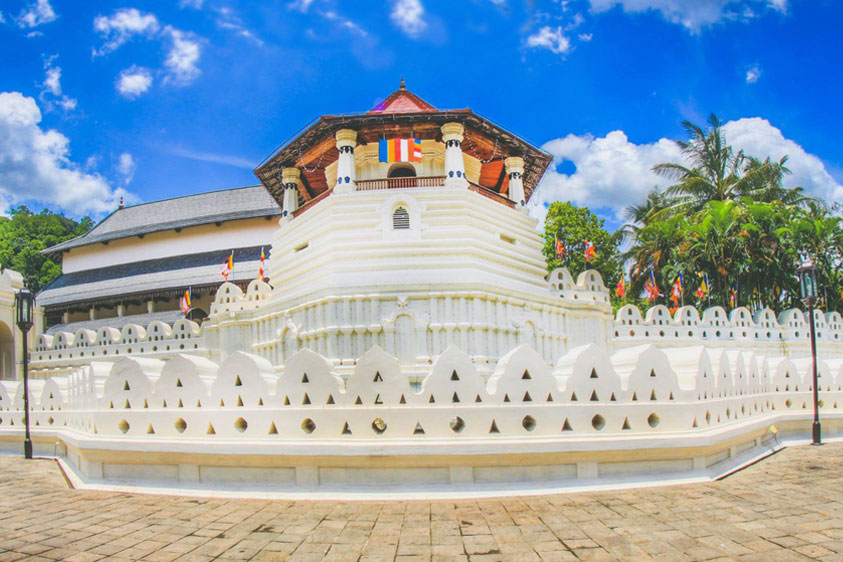
Jaya Sri Maha Bodhi is a Sacred Fig tree in the Mahamewna Gardens, Anuradhapura, Sri Lanka. It is said to be the right-wing branch (southern branch) from the historical Sri Maha Bodhi at Buddha Gaya in India under which Lord Buddha attained Enlightenment. It was planted in 288 BC and is the oldest living human-planted tree in the world with a known planting date. Today it is one of the most sacred relics of the Buddhists in Sri Lanka and respected by Buddhists all over the world.
Buddhists in the Island have had a practice of visiting and paying homage to the most sacred Bodhi tree since time immemorial. It is an annual custom for pilgrims from far-away villages to visit the city of Anuradhapura and to pay homage to the Sri Maha Bodhi.
In the 3rd century BC, it was brought to Sri Lanka by Sangamitta Theri, the daughter of Emperor Asoka and founder of an order of Buddhist nuns in Sri Lanka. In 288 BC it was planted by King Devanampiya Tissa on a high terrace about 6.5 m above the ground in the Mahamevnāwa Park in Anuradhapura and surrounded by railings.
View More Details about Jaya Sri Maha Bodhi.
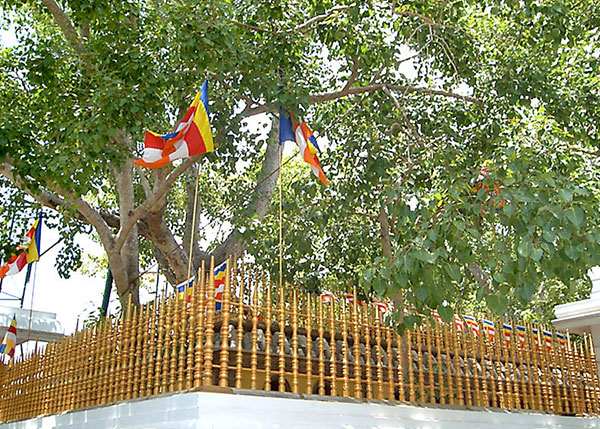
The Ruwanwelisaya (also written as Ruvanvalisaya) is a stupa in Sri Lanka, considered a marvel for its architectural qualities and sacred to many Buddhists all over the world. Simply known also as the Great Stupa, the Ruvanvalisaya was constructed by Dutthagamani after he became king in 161 BCE. This was his most ambitious project and it is said that one of the architects designed the dome to resemble a bubble of milk. Sadly, the king did not live to see the completion of the stupa.
When it was finally completed, it was one of the wonders of the ancient world, with a diameter of 90 meters at the base and a height of 92 meters (300 ft) and circumference of 292 meters (950 ft). The stupa is one of the world's tallest monuments and was the fifth tallest structure of any kind when it was built in approximately 161 BCE.
The stupa is also one of the Solosmasthana (the 16 places of veneration) and the Atamasthana (the 8 places of veneration in the ancient sacred city of Anuradhapura). The entire city of Anuradhapura has been designated a UN World Heritage Site.
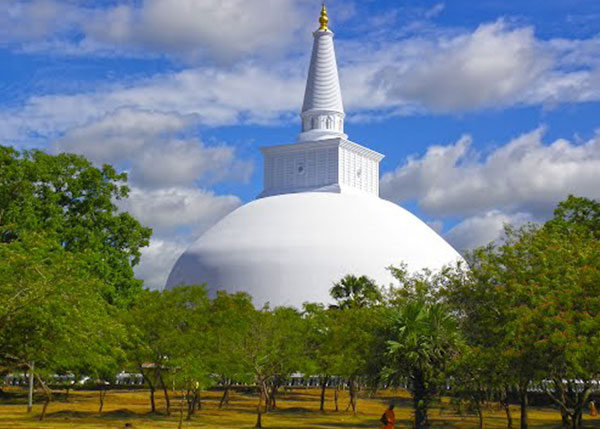
Dambulla cave temple also known as the Golden Temple of Dambulla is a World Heritage Site in Sri Lanka, situated in the central part of the country. This site is situated 148 kilometers east of Colombo and 72 kilometers north of Kandy.
Dambulla is the largest and best-preserved cave temple complex in Sri Lanka. The rock towers 160 m over the surrounding plains. There are more than 80 documented caves in the surrounding area. Major attractions are spread over five caves, which contain statues and paintings. These paintings and statues are related to Gautama Buddha and his life. There are a total of 153 Buddha statues, three statues of Sri Lankan kings and four statues of gods and goddesses. The latter include Vishnu and the Ganesha.The murals cover an area of 2,100 square metres (23,000 sq ft). Depictions on the walls of the caves include the temptation by the demon Mara, and Buddha's first sermon.
Prehistoric Sri Lankans would have lived in these cave complexes before the arrival of Buddhism in Sri Lanka as there are burial sites with human skeletons about 2700 years old in this area, at Ibbankatuwa near the Dambulla cave complexes.
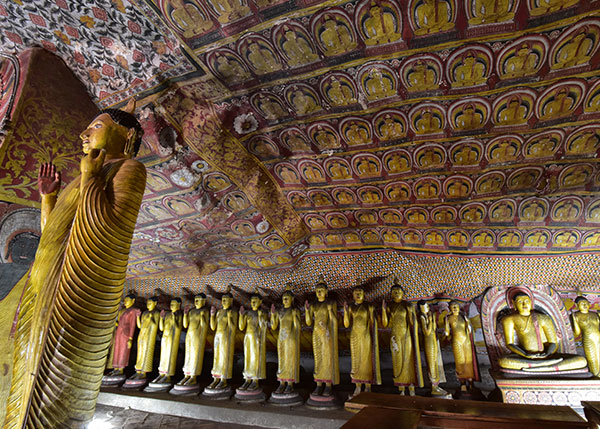
Mahinda Thera, an envoy sent by King Ashoka himself introduced Theravada Buddhism and also ‘chetiya worship’ to Sri Lanka. At his request King Devanampiyatissa built Thuparamaya in which was enshrined the collarbone of the Buddha. It is considered to be the first ‘Dagaba’ built in Sri Lanka following the introduction of Buddhism. This is considered the earliest monument, the construction of which was chronicled Sri Lanka. The name Thuparamaya comes from "stupa" and "aramaya" which is a residential complex for monks.
Thuparamaya dagoba has been built in the shape of a bell. This dagoba was destroyed from time to time. During the reign of King Agbo II it was completely destroyed and the King restored it. What is seen presently is the construction of the dagoba, done in 1862 AD. As of today, after several renovations, in the course of the centuries, the monument has a diameter of 59 ft, at the base. The dome is 11 feet 4 inches in height from the ground, 164 1⁄2 ft (50.1 m) in diameter. The compound is paved with granite and there are 2 rows of stone pillars round the ‘Dagaba’. During the early period a ‘Vatadage’ was built round Thuparamaya.

Abhayagiri Vihāra was a major monastery site of Mahayana, Theravada and Vajrayana Buddhism that was situated in Anuradhapura, Sri Lanka. It is one of the most extensive ruins in the world and one of the most sacred Buddhist pilgrimage cities in the nation. Historically it was a great monastic centre as well as a royal capital, with magnificent monasteries rising to many stories, roofed with gilt bronze or tiles of burnt clay glazed in brilliant colors. To the north of the city, encircled by great walls and containing elaborate bathing ponds, carved balustrades and moonstones, stood "Abhayagiri", one of seventeen such religious units in Anuradhapura and the largest of its five major viharas. One of the focal points of the complex is an ancient stupa, the Abhayagiri Dagaba. Surrounding the humped dagaba, Abhayagiri Vihara was a seat of the Northern Monastery, or Uttara Vihara and the original custodian of the Tooth relic in the island.
Founded in the 2nd century BC, it had grown into an international institution by the 1st century AD, attracting scholars from all over the world and encompassing all shades of Buddhist philosophy. Its influence can be traced to other parts of the world, through branches established elsewhere.

The Jetavanaramaya is a stupa located in the ruins of Jetavana in the sacred world heritage city of Anuradhapura, Sri Lanka. Mahasena of Anuradhapura (273–301 B.C.) initiated the construction of the stupa following the destruction of the mahavihara. His son Maghavanna I completed the construction of the stupa. A part of a sash or belt tied by the Buddha is believed to be the relic that is enshrined here.
The structure is significant in the island's history for it represents the tensions within the Theravada and Mahayana sects of Buddhism; it is also significant in recorded history as one of the tallest structures in the ancient world; and the second tallest non-pyramidal buildings after Pharos (lighthouse) of Alexandria; the height of the stupa is 400 feet, making it the tallest stupa in the ancient world. The structure is no longer the tallest, but it is still the largest, with a base-area of 2,508,000 sq ft.
It is estimated that Jetavanaramaya took 15 years to complete and would have required a skillful workforce of hundreds, including brickyard workers and bricklayers, and stonemasons.
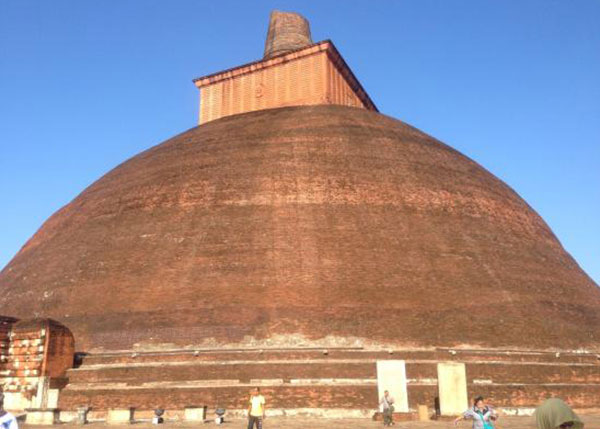
Isurumuniya is a Buddhist temple situated near to the Tissa Wewa (Tisa tank) in Anuradhapura, Sri Lanka. There are four carvings of special interest in this Vihara. They are the Isurumuniya Lovers, Elephant Pond and The Royal Family.
Isurumuni Lovers:
6th Century Gupta style carving. The woman, seated on the man's lap, lifts a warning finger, probably as a manifestation of her coyness; but the man carries on regardless. The figures may represent Dutugemunu's son Saliya and the low caste (Sadol Kula) maiden Asokamala whom he loved. It's known that he gave up the throne for her.
Royal Family Carving:
The Royal Family carving is carved on a Granite plate. There are five human figures carved on this plate. The human figure in the center is King Dutugamunu, who has a tall crown on his head and a "puna noola" around his chest. At his left are another two human figures. They are fanning him with a "Wijinipath"
